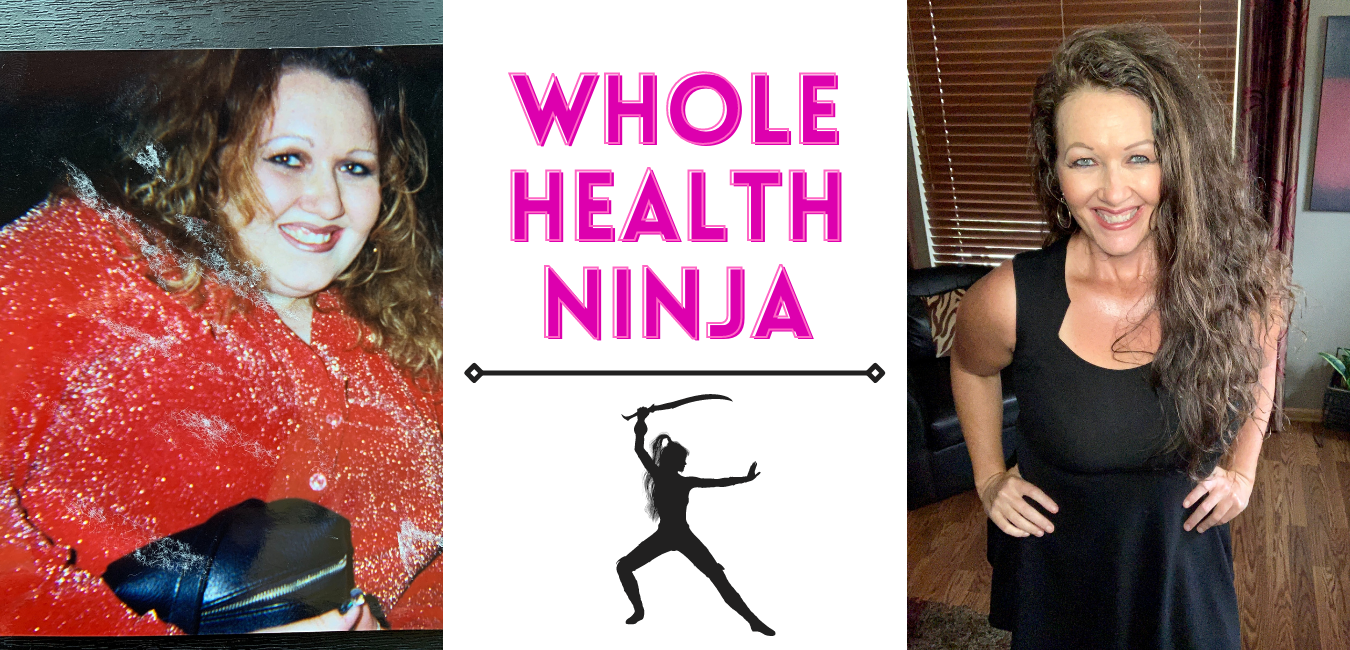When you think of making homemade bread, what picture comes to mind?
For me, it used to be a painful process of endlessly kneading dough and a huge mess with flour everywhere. Then I discovered this amazingly simple recipe for homemade buckwheat bread, and found out it doesn’t have to be painful or messy at all!
Plus, this simple recipe is totally free of gluten, dairy and eggs which is awesome for people with common food allergies and people who follow a plant-based diet. And it doesn’t require any yeast!
I know, I know…a lot of “healthy” and gluten-free bread recipes out there fall short of having a true bread consistency that you can slice, toast and spread stuff on. But not this buckwheat bread!
I also know you can buy bread in stores that is gluten-free, dairy-free and egg-free. But it’s usually expensive and tends to be loaded with a crap storm of ingredients that don’t support a clean and healthy diet. (“Gluten free” does not mean healthy!)
Please don’t let the “wheat” in buckwheat fool you. It’s not related to wheat at all! That’s why buckwheat is an excellent alternative for people like me who follow a gluten-free diet.
This bread is made using buckwheat groats, which are the seed of the buckwheat plant. They are very nutrient dense with good stuff like antioxidants, energy-boosting B vitamins, magnesium, manganese, zinc, iron, phosphorus, protein and lots of digestion-boosting fiber.
And check this out…
The antioxidants in buckwheat help lower inflammation and fight serious diseases like cancer in your body! They can even help lower cholesterol and blood pressure.
More good news…
Buckwheat is low on the glycemic index, so it won’t make your blood sugar spike. And because it is a complex carbohydrate, its nutrients are absorbed into your bloodstream slowly which will keep you feeling full for longer and support sustainable energy.
Are you excited to try it? Let’s go!
THE RECIPE
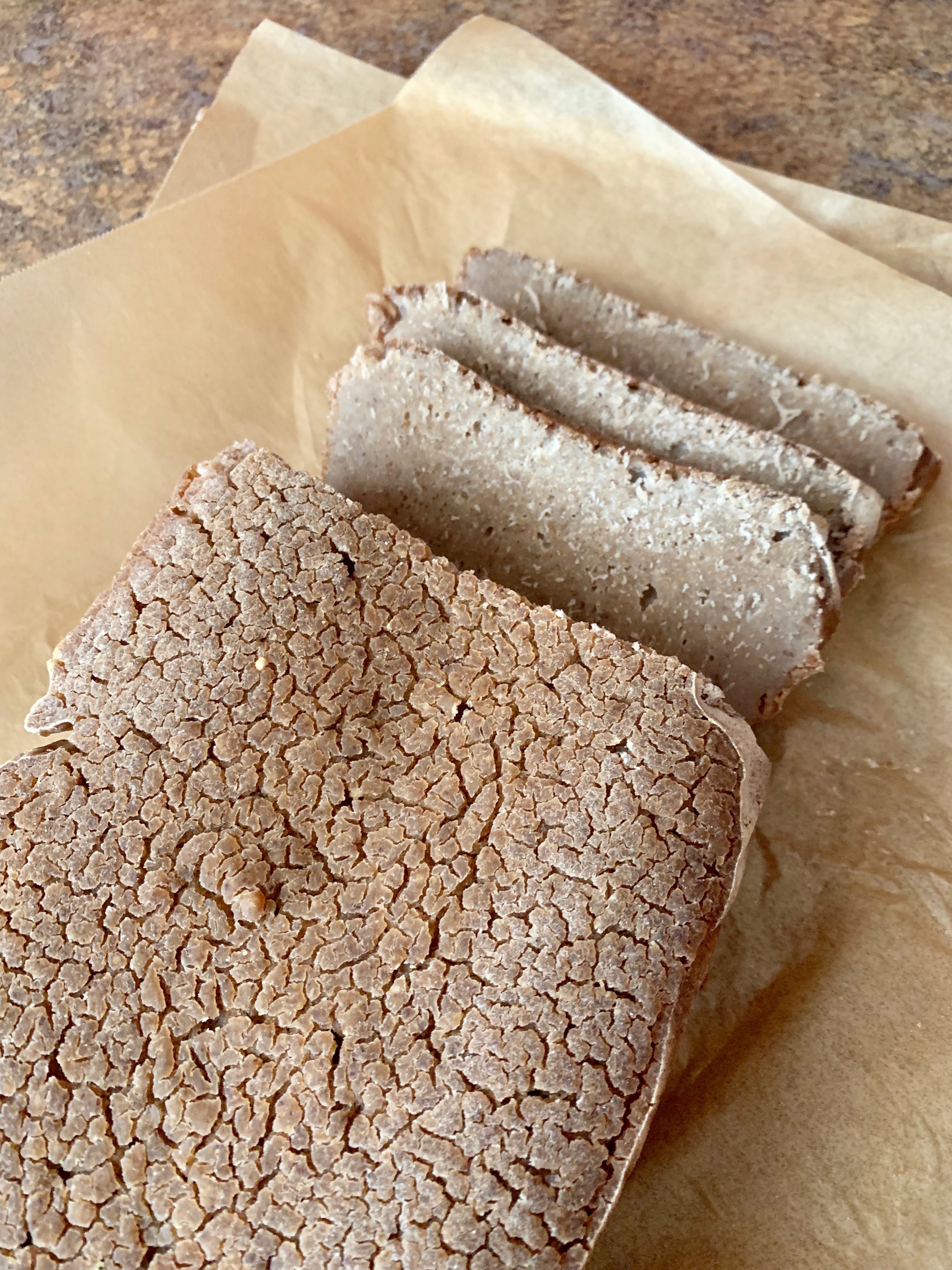
The key to making this bread a success is to ferment the buckwheat groats for many hours to make the nutrients more absorbable when you eat them. Plus, they will be very easy to digest.
The fermentation process isn’t difficult in terms of hands-on work…it just takes a lot of soaking and rising time as detailed below.
The actual hands-on work for making this bread is quite minimal, and you won’t have to knead the dough at all (YAY!). Just be prepared that the buckwheat groats will need to soak and be allowed to rise for several hours before baking the bread.
Ingredients:
Other than water, there are only 3 required ingredients for this recipe:
- 3 cups of purified water or spring water
- 2 & 1/2 cups of organic buckwheat groats
- 3 tablespoons of organic lemon juice
- 1 teaspoon of Himalayan pink salt
To make the bread heartier and to incorporate a good dose of healthy fat, I sometimes like to add these heart-healthy seeds to the mix:
- 1/3 cup of raw pumpkin seeds (pepitas)
- 3 tablespoons of flax seeds
NOTE: You can substitute with other healthful seeds like chia, hemp, sunflower and sesame.
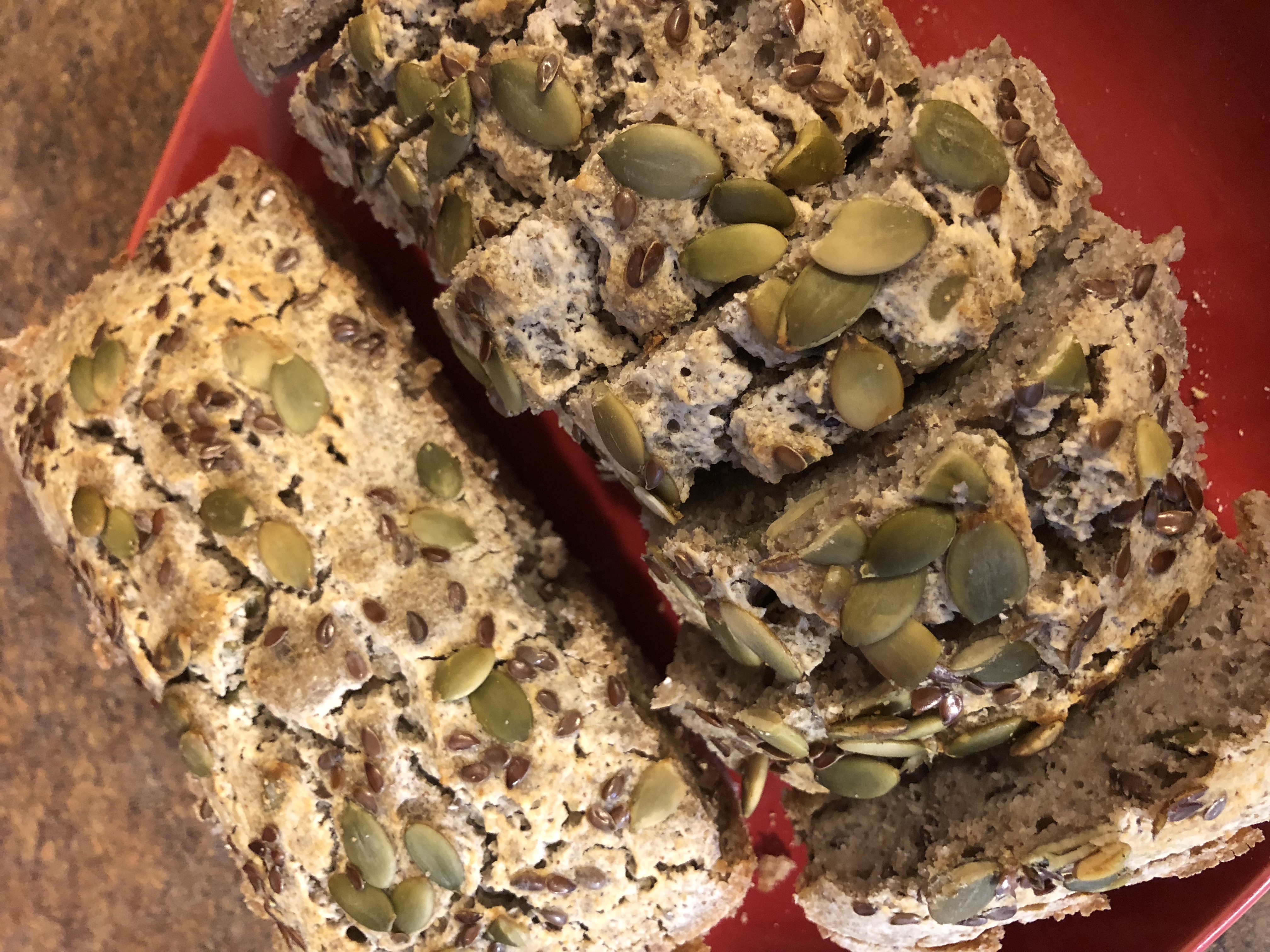
Equipment:
You will need a few kitchen tools to make this recipe a success:
- Two large mixing bowls. (I recommend using glass bowls like these.)
- A large fine mesh strainer (like this) for draining and rinsing the buckwheat groats.
- A high-speed blender or food processor for turning the groats into batter. (I use a Blendtec blender.)
- A silicone spatula (like this) for scraping the batter out of the blender/food processor and mixing bowl.
- Loaf pans. You can use just 1 regular loaf pan for a single large, dense loaf. You can use 2 regular loaf pans for 2 smaller sized loafs. Or, you can use 4 mini-loaf pans for 4 mini-loafs. (I recommend using glass pans like these for toxin-free baking and easier clean-up.)
4-PHASE PREPARATION
Phase 1:
- Place 2 & 1/2 cups of organic buckwheat groats into a large mixing bowl.
- Add 3 cups of purified water or spring water. (NOTE: It’s important that the water is clean and pure, because chlorine and other contaminants in tap water can sour the fermentation process.)
- Add 3 tablespoons of lemon juice and stir everything together.
- Cover the bowl with a large dish towel or cloth and sit it on your stovetop for 8 hours. (I usually complete this phase before going to bed and let it sit overnight.)

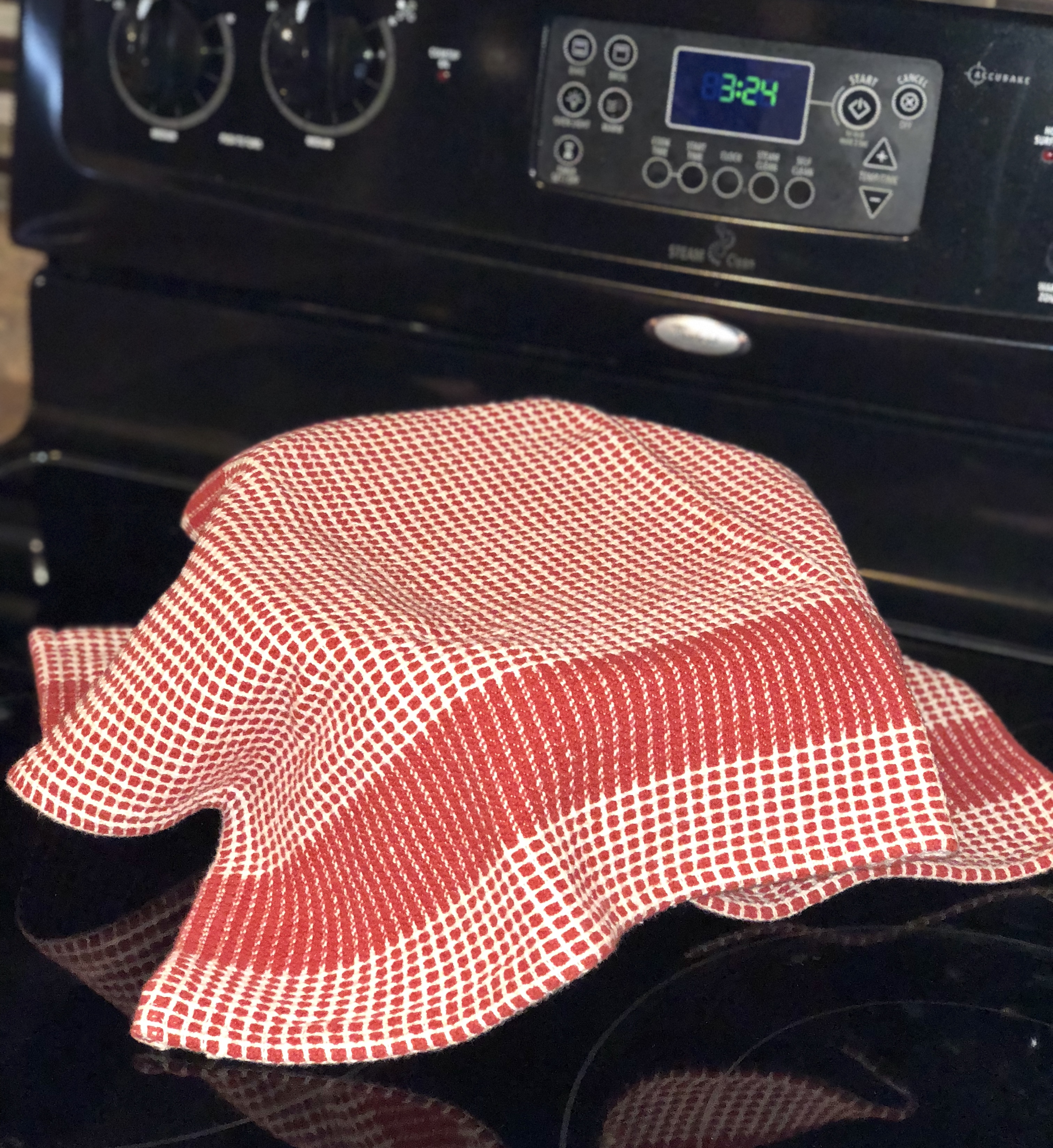
Phase 2:
- Drain the water from the buckwheat groats using a fine mesh strainer. Rinse the groats thoroughly and make sure they are drained completely before moving to the next step.
- Wash the used mixing bowl to remove any residue and pour the rinsed groats back inside. Add 1 & 1/3 cup of fresh water and gently stir to combine.
- Pour half of the mixture into your high speed blender or food processor. DO NOT attempt to put the entire mixture in at once, because it will spill over and make a mess! Blend until smooth.
- Pull out a separate large mixing bowl and pour the blended batter inside. Blend the remaining groats and water and add the rest of the batter to the new bowl. (Now you are done with the original mixing bowl.)
- Cover the batter and put it in a warm place at a temperature between 67 – 70° F to ferment and rise for 24 hours. (I just put it back on my stovetop.) The batter is not going to rise a lot, but it will expand from about 5 cups to 6 1/2 cups.
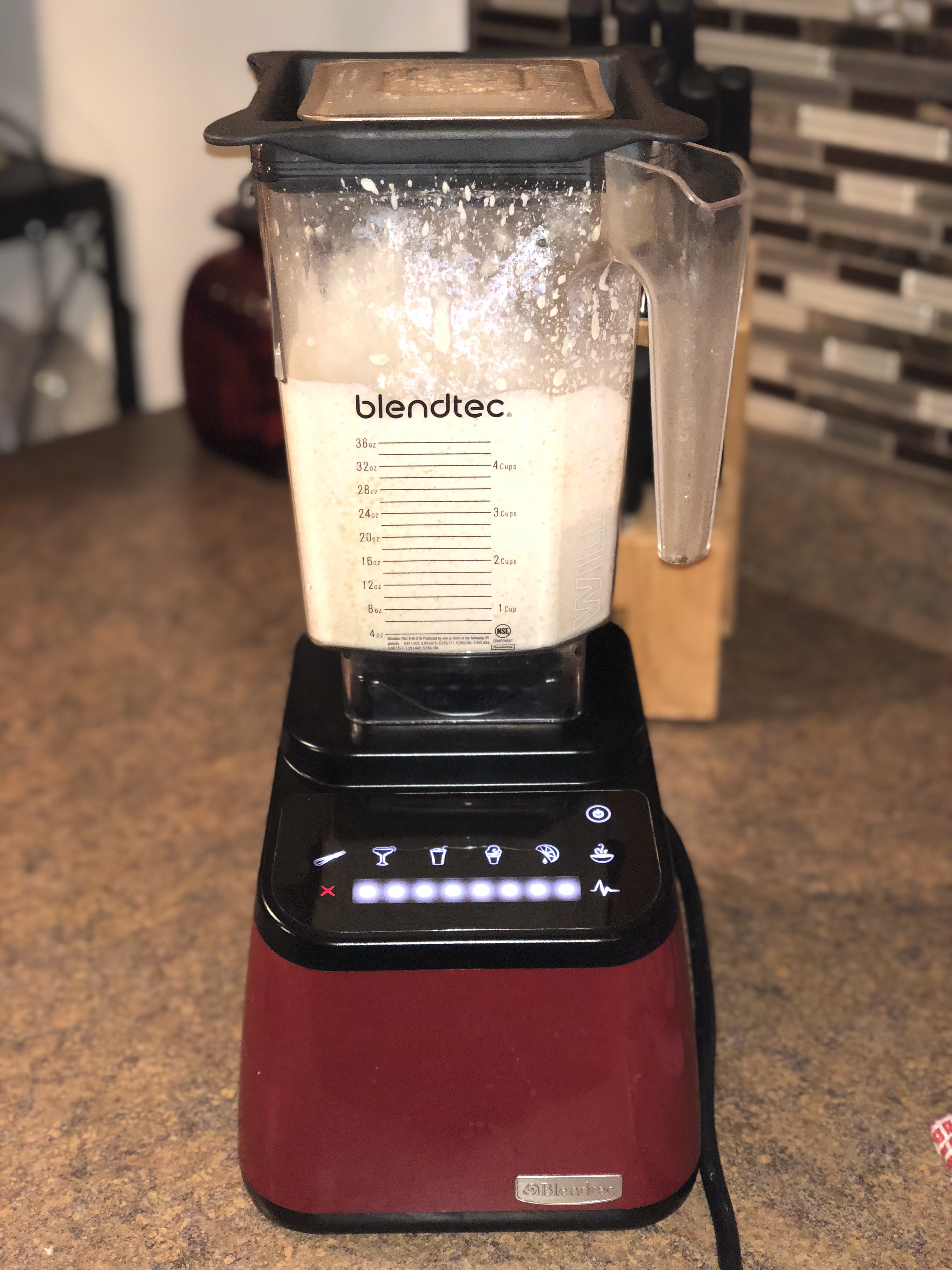
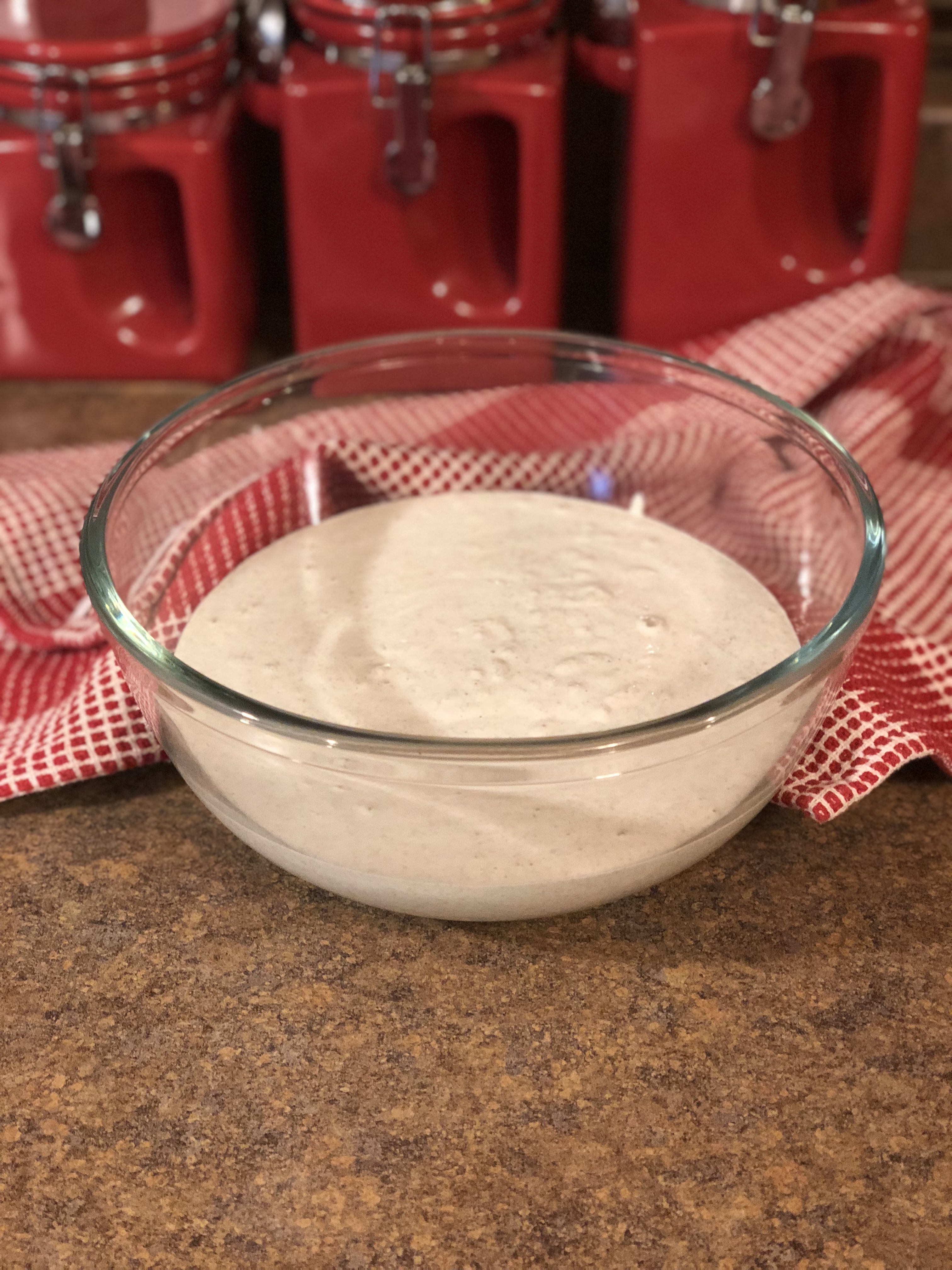
Phase 3:
- Uncover the batter, add 1 teaspoon of Himalayan pink salt and the optional seeds (again, I add1/3 cup of pumpkin seeds and 3 tablespoons of flax seeds), and gently fold into the batter. Do not over-mix! You can omit the seeds altogether or substitute with others like chia, hemp, sunflower and sesame.
- Transfer the batter evenly to the loaf pan(s). As I mentioned before, you can make one large loaf, 2 smaller loaves or 4 mini loaves (this is my preference.) You can line your loaf pan(s) with unbleached parchment paper, or use a little avocado oil to coat the pan(s) to prevent sticking. (I prefer using unbleached parchment paper for easy clean-up!)
- If you’re including seeds, garnish the top of the batter with a sprinkle of them. I also like to add a hearty dash of garlic powder on top of my loaves, because I’m a garlic-a-holic and it tastes amazing!
- Cover the batter-filled loaf pan(s) and let the batter rise for another 60 minutes.
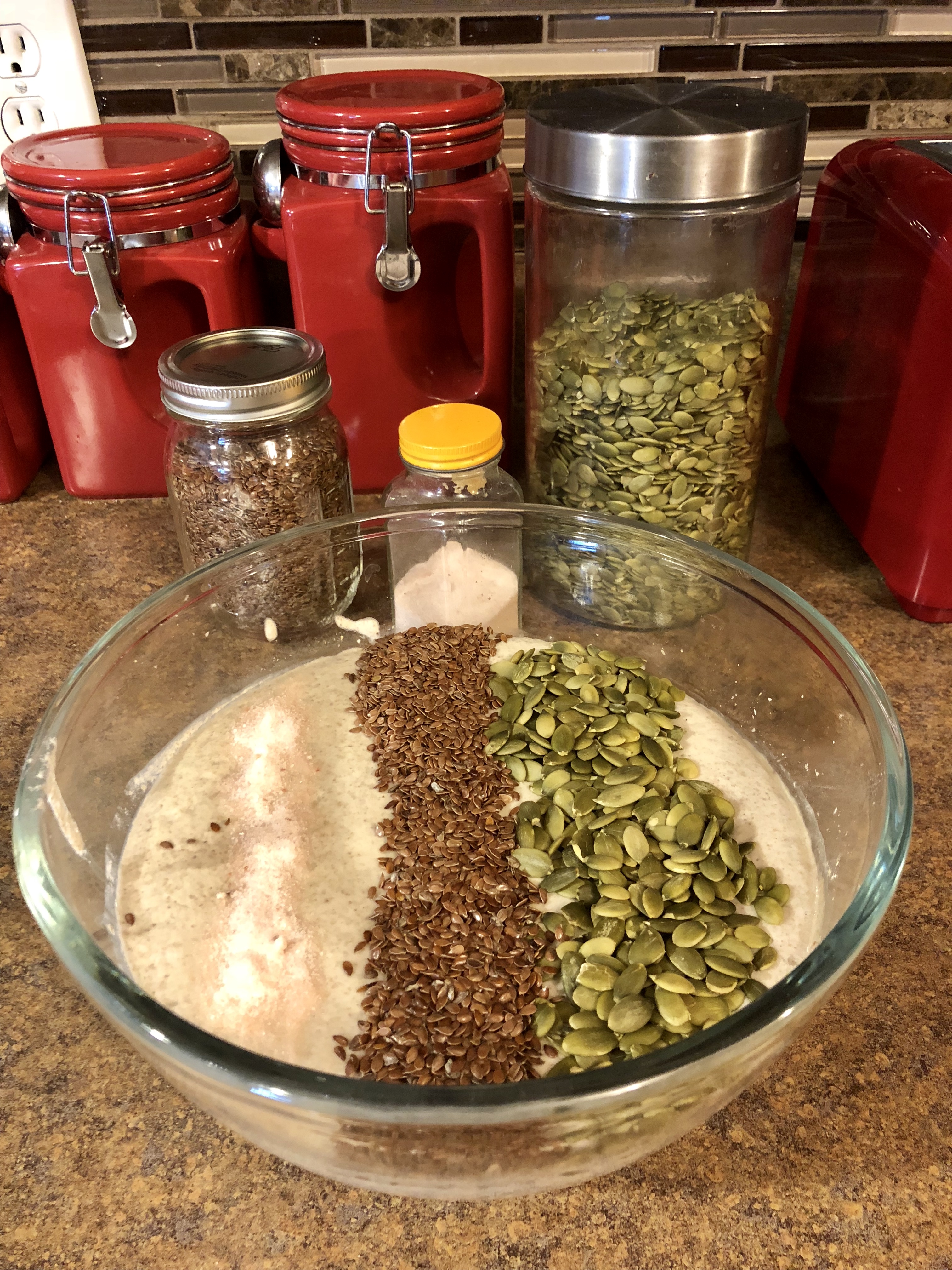
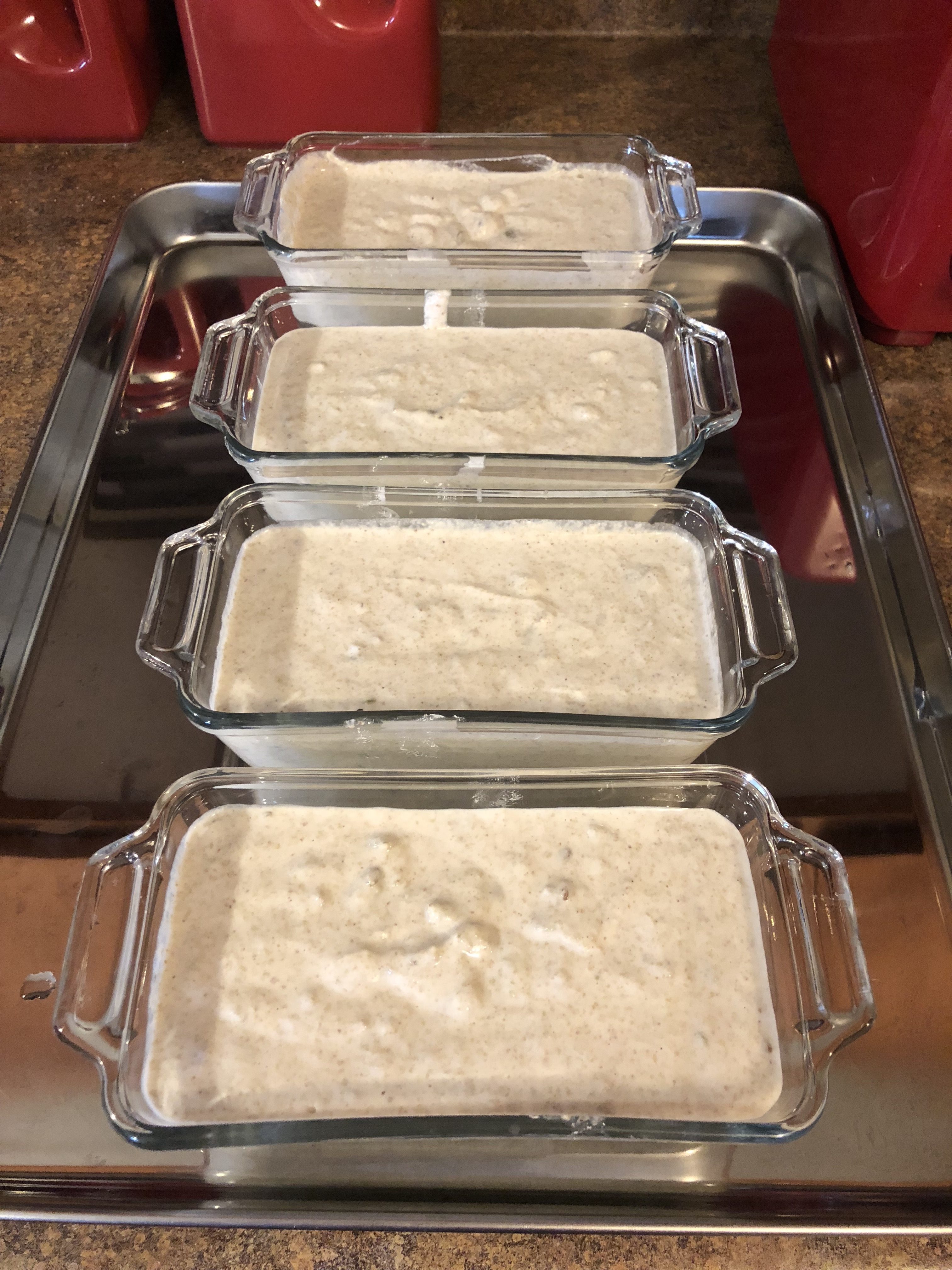
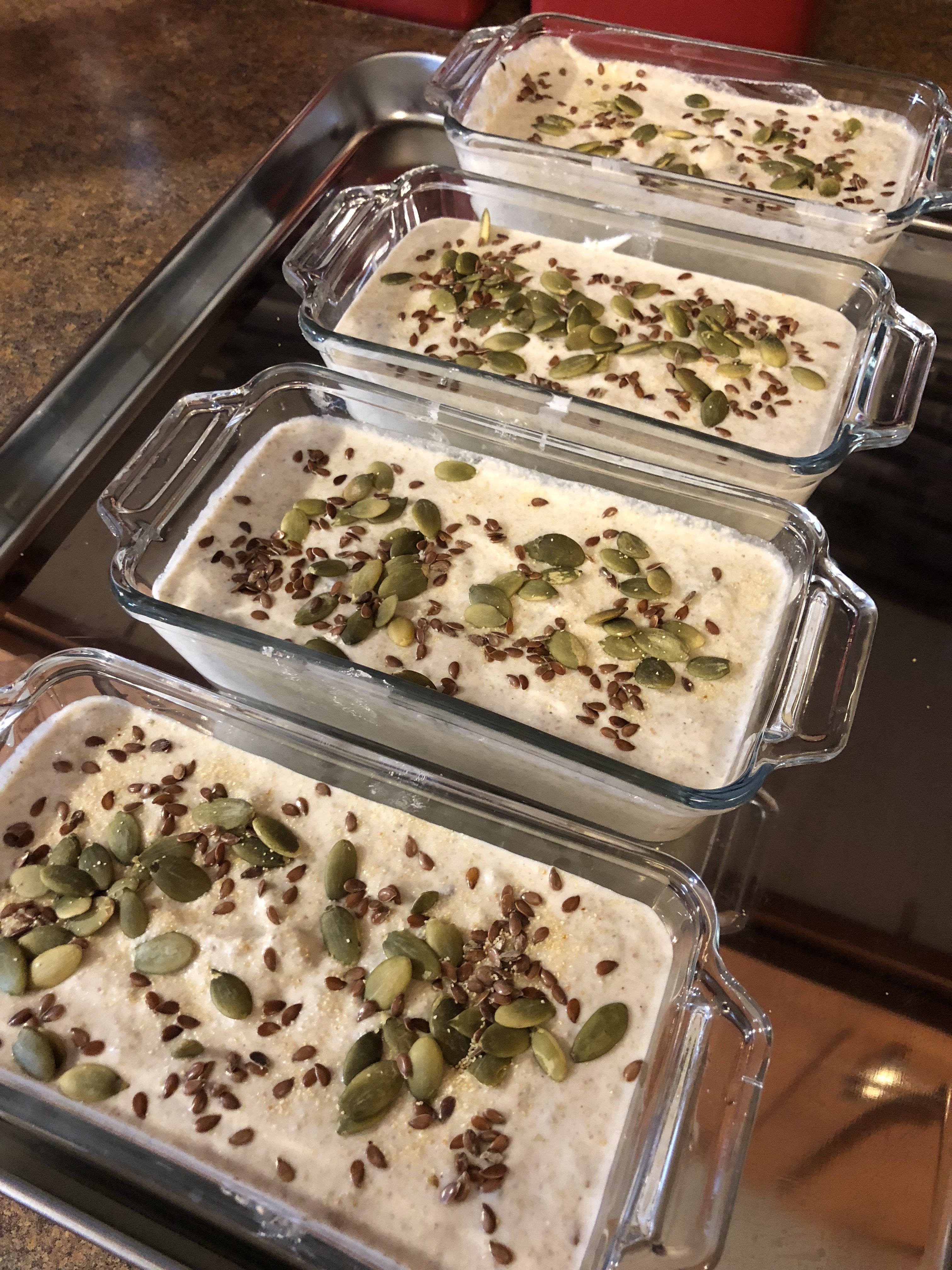
Phase 4:
- Preheat the oven to 350° F.
- Bake the bread for about 1 hour and 10 minutes. (NOTE: Baking time varies based on ovens and pan materials, so your bread may take more or less time. Be sure to keep an eye on it!) Test by inserting a toothpick into the center of the loaf to make sure it comes out clean with no batter on it. The edges of the loaf will be golden brown once it’s ready.
- Remove the pan(s) from the oven and allow them to cool completely (at least 15-20 minutes) before slicing.
- ENJOY!!!
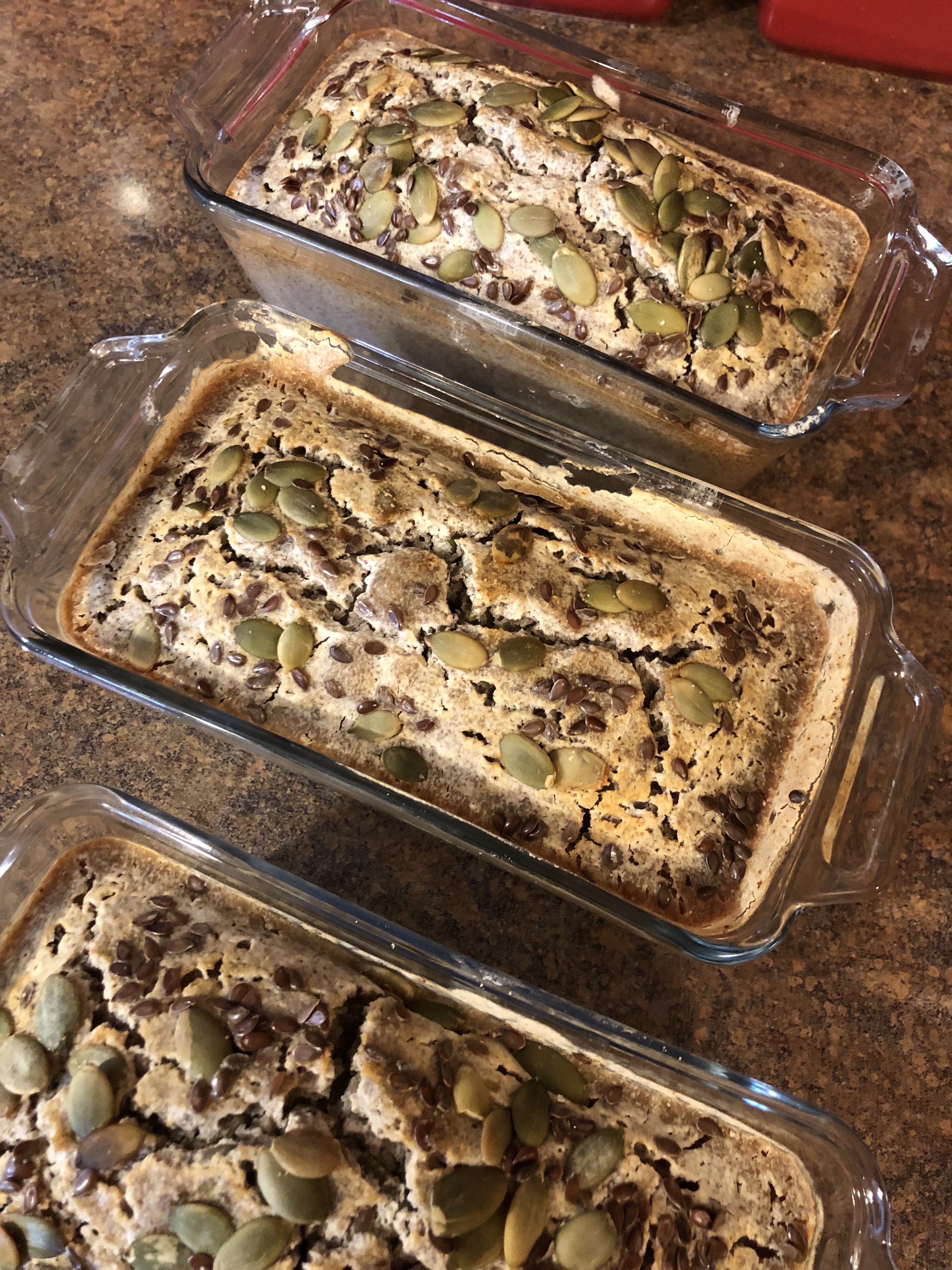
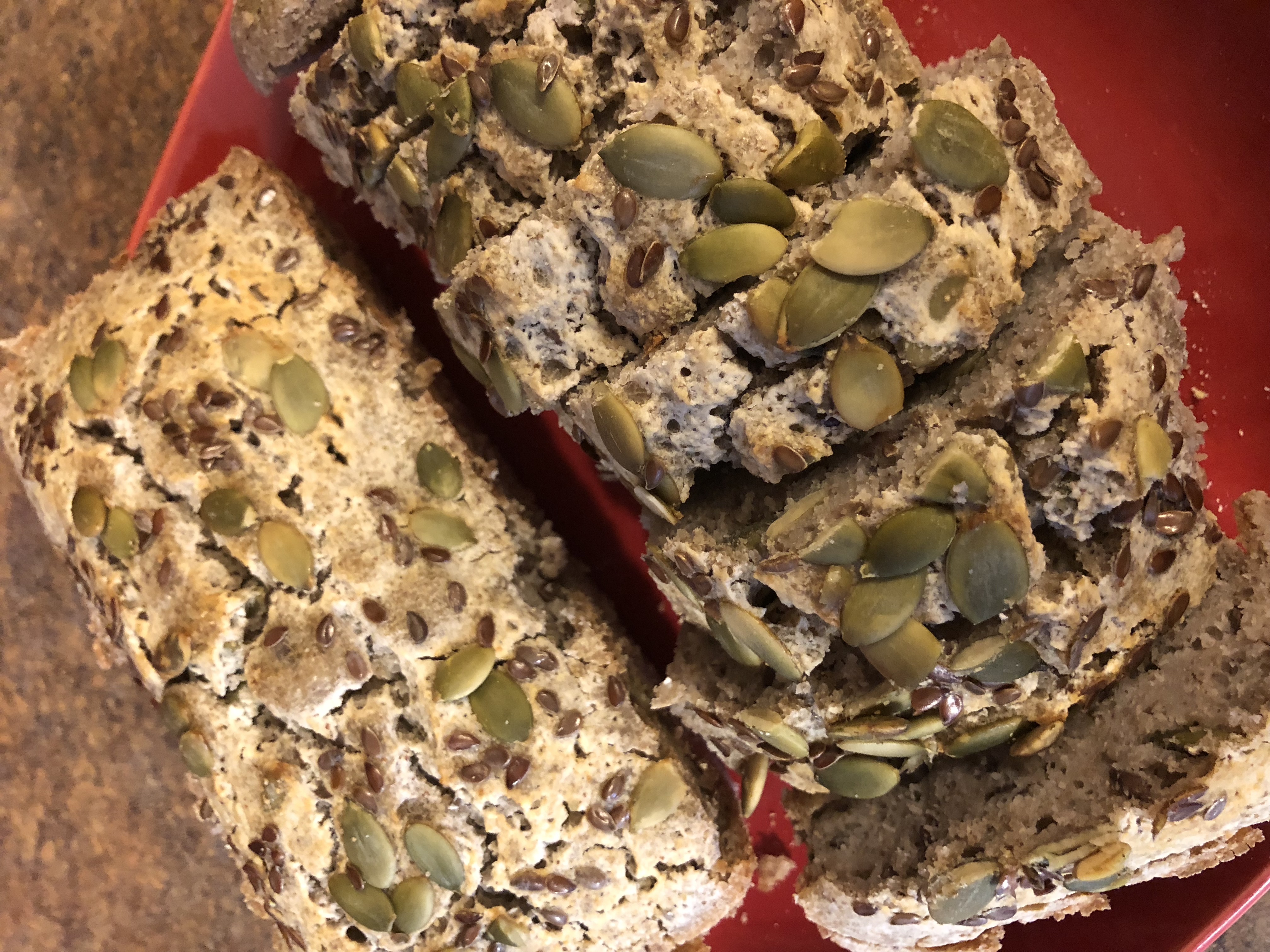
TIPS
- This bread keeps well in the fridge for 7-8 days.
- A serving is approximately 4 slices of a mini loaf (about 1/3 of the mini loaf), and 2 slices of a large loaf.
- If you fall in love with making this bread like I have, make it a part of your weekly routine. For example, complete phase 1 before going to bed on Friday night. Get the batter ready (phase 2) on Saturday morning to let it sit for 24 hours. Then, do the actual baking (phases 3 & 4) on Sunday morning. That way, you’ll always have delicious homemade bread on deck for the week!
- This bread makes AMAZINGLY delicious avocado toast.
- This bread travels really well, so feel free to take it with you on the road.
Cheers to enjoying homemade bread that’s simple, healthy and delicious!
With love and gratitude,
Kandi
DISCLOSURE: Many of the links above are affiliate links, which means I earn a small commission – at no additional cost to you – if you purchase a product through them. (Click here to view my full Disclaimer & Disclosure statement.) This helps me continue providing FREE content to help you live a fit and fabulous life without busting your bank account. Thanks for your support!
